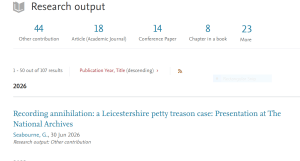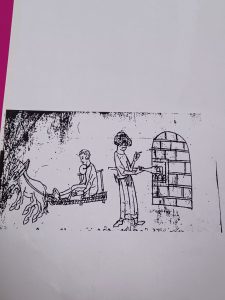I think I had better record this confession, in case there are consequences … I have just entered a ‘research output’ on my institution’s system, like a good little Starfleet Officer, but somehow got the year of publication wrong. So it is down as ‘published’ … but in 2026 not 2023, and I can’t change it. What chaos might that cause? Well, if space and time become royally screwed up … sorry everyone!
Author Archives: vifgage

Further thoughts upon the Pon Farr
On a previous stardate, back in 2020, I wrote a piece about a classic Star Trek episode, ‘Amok Time’ (1967). This is the one which features a trip to Vulcan, and Spock being on heat – due to the seven-yearly pon farr mating urge – and not even vaguely logical. Obviously, my inner legal historian (OK, not all that ‘inner’ …) was intrigued by the ‘trial by battle’ between Spock and Kirk over the minxy T’Pring (Spock’s fiancée, who was keen to dump him for a rather buffer Vulcan called Stonn). Now, in my continuing – possibly impossible – mission to watch everything Star Trek, I have seen a Voyager episode from 30 years afterwards, ‘Blood Fever’ (3:16, 1997), which takes up some of the threads from ‘Amok Time’, and expands upon some aspects of Vulcan mating and marriage customs, in the lore of the Star Trek universe. It also, perhaps, raises some questions about the pitfalls of trying to maintain storylines and ideas over a long period of time, when attitudes in our own world may have moved in important ways.
Anyway, the episode involves a male Vulcan engineering ensign, Vorik, going through the pon farr and focusing his attention on half-Klingon, half-human Lieutenant B’Elanna Torres. Vorik proposed to her (declares koon-ut-so-lik). She refused him, but he would not take ‘no’ for an answer and attacked her. She punched him out. However, the physical contact involved in their fight (he had her by the neck at one point, and held her face in a similar way to the famous ‘mind meld’ position) ‘infected’ her through sort of rapey telepathic bond, and Torres began to go into a version of the pon farr with Klingon characteristics. She still wasn’t attracted to Vorik, though, and pursued Lieut. Tom Paris, while they were stuck on a rather desolate planet, on an ‘away mission’.
The implications of the pon farr for those who could not get to Vulcan was explored. The deal with that is that, if they can’t mate or fight, or perhaps suppress the whole thing through meditation, a (male?) Vulcan may well die. So what to do? The whole problem is not helped by the Vulcans’ ‘Victorian’ attitude to the whole sex thing and insistence that the pon farr is terribly private. Vorik says insists that he can try and get on top of it, and ‘resolve [his] situation privately.’ Meditation is mentioned, but there is a strong hint at Vulcan wanking too (or is that just me?). Certainly wank-adjacent is the Doctor’s scheme of programming a Vulcan woman on the holodeck for Vorik.
The Vulcan is confined to his quarters – presumably justified on grounds of protection of the rest of the crew. He escapes, however, and follows Torres down to a planet where she is working, to ‘consummate their union’. It is not clear that her consent is in any way relevant to him. Seeing Torres and Tom Paris about to have sex, Vorik challenges Paris (the koon-ut-kal-if-fee). Torres steps in and takes the challenge and is allowed to do so. The two fight, Torres wins, and this purges both of them of blood fever.
What do we learn, in terms of law, customs and practice surrounding marriage and sex?
There is some expansion on the Vulcan trial by battle idea …
- It is possible for a woman to fight
- It can be fought without the ritual weapon, the lirpa
- Fighting itself gets rid of the pon farr chemicals
- Fighting need not be to the death, nor on Vulcan, to have this effect.
… and Vulcan marriage …
- Arranged marriages are the norm
- If it is logical to assume that one’s betrothed is lost, one may seek another mate
What do we learn about Star Trek and gender?
So – we are thirty years on from ‘Amok Time’: how has the mood changed with regard to ideas about gender and sex? Well, there are positive things: Torres is definitely her own woman, active, respected and brave, and she gets to participate directly in the ‘trial by battle’ section of the story, rather than sitting back decorously and letting the men fight it out. But there may be a bit too much emphasis on the nobility of Tom Paris, not wanting to have sex with B’Elanna while she is ‘under the influence’ – I mean, obviously this is good, but, dramatically, it is being set up as a balance to the attempted rape by Vorik on Torres, and the icky (at best) holodeck sexbot idea. And the joking discussions of Klingon ‘rough sex’ might not be beyond questioning.
I am left wondering about the choice to maintain, or bring back, the pon farr idea in the 1990s. I can see why it was tempting to bring in the conundrum of how to deal with desire in the situation of the long journey home of Voyager, but the (real) world changed quite a lot in those intervening years (challenges to and much removal of the marital rape exception, improvements in understanding of rape myths and gender inequality) and the narrative of virtually irresistible sexual urges in a male of a particular species (however muddied in gender terms by the transmission to Torres) might have been best left in Stardate 1967.
GS
17/6/2023
Image courtesy of Wikimedia Commons
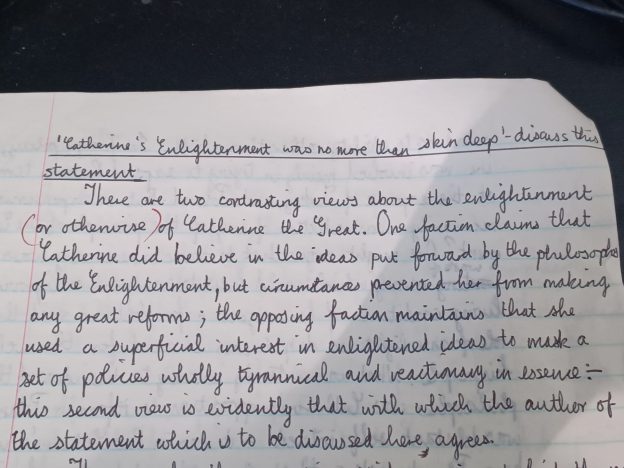
Some personal (sort of legal) history
Still clearing out my home of many years, and finding many ‘gems’ from past lives. Very odd to come across something I hadn’t thought about for decades – the essay I submitted for the university admissions process, back in the deep past. A history essay, which clearly appealed, for some reason, to those making these decisions. Sure it would not have been the stammering, nervy, nerdy, interview that swung it. So thank you, Catherine the Great, I suppose! Also – in palaeographical news – my handwriting does not look like that any more!
GS
16/6/2023
Assize (still) matters (?)
Clearing out a lot of stuff from my house, as times are very much a-changin’ … came across a cache of overhead projector slides from some long-ago talk on price regulation (odd how that has just hit the news again …). Time to get rid, seeing as I don’t think OHPs are actually going to be coming back. But these are great, so I thought I would snap them for the blog.
Both images come from the Liber de Assisa Panis, a London MS about bread price/quality regulation. That sort of thing was an important part of my PhD thesis, and also formed the basis of an article with the main title ‘Assize Matters’. Not sure whether the editor of the Journal of Legal History at the time did, or did not, get the smutty joke, which owed something to these suggestive car ads … A career high in any case: can’t beat a good pun.
Smut aside, I do love the fact that the top image shows a bit of a space-planning fail. The artist seems to have made everything a bit too big, so that the horses pulling the sledge had to be squashed in (or were the horses drawn by somebody else?) The second one is much more rough and ready, and they decided not to bother with the horses at all. Very ‘relatable’ – horses are hard. I remember that my big sister used to arrange any drawings featuring horses in such a way that she only had to draw the horse’s backside, tail and back legs, because horse heads were so difficult. We are a very artistic family … Also love the fact that this cruder drawing has a label, so we can be in no doubt that it is John de Stratford, whose transgression appears in the entry beside it. Just in case the likeness was not absolutely apparent.
Enough reminiscing – time to move on (though not dragged on a sledge, I hope ,,,)
GS
2/6/2023.

From ‘forthcoming’ to ‘coming forth’: a long chapter in academic life
A chapter I wrote quite a while ago, on the legal history of rape in western Europe, has just come out in a collection about medieval crime and deviance.
‘Rape and Law in Medieval Western Europe’ looks at the ways in which different medieval jurisdictions approached rape. The records on which it is based are not straightforward (languages, handwriting, changing meanings of words, and more …), but, carefully examined and considered, they do give at least a sketch of the ways in which rape was thought about, and treated, in medieval law.
There are comparisons and contrasts to be made with regard to the ways in which a case might be brought before a court, the factors which would make sexual misconduct seem to those [men] trying a case more or less serious, and the consequences of a finding of guilt. It is easy to find statements about the serious nature of rape, but often – and this is certainly the case in English records – difficult to find examples of completed, ‘successful’, prosecutions of offenders. This should lead us to ask why that might have been the case, but also to question what we mean by ‘success’ in this context. In medieval English law, if felonious rape was prosecuted through to a conviction, the consequence would be a sentence of death by hanging, and forfeiture of property. The vast majority of rape cases stalled or were diverted at some point before this fatal outcome, however. It seems likely that a significant proportion of them were settled, so as to give some financial assistance to a woman who would now, perhaps, face significant difficulties. No doubt in some cases a complainant simply gave up.
Jurisdictions showed variation in terms of who was seen as a possible victim of rape (Only women? Only or particularly certain sorts of women/girls?) in terms of procedures and in terms of the consequences of a finding of guilt. As we might expect, there were some very negative attitudes towards women embedded in law and practice, though there are also intriguing occasional examples which seem to show sympathy and significant support for women and girls who had been raped. Much of what we would probably like to know lies hidden behind the terse records of cases which remain, and some insights can be gained by considering medieval literary treatments of rape (even though somebody like me, with no real expertise in literature, should tread very warily here). The one law-literature matter which I was, sadly, unable to treat here was the recent developments in the Geoffrey Chaucer-Cecily Chaumpaigne case, which became big academic news long after I actually wrote the chapter (which, I think, was in 2018 … academic publishing can be slow …) and too close to the date of publication to allow for an addition to the text. I intend to write a little more about that soon, as I think there are a couple of ‘legal historian’ points which people might find helpful/interesting).
The overall message of the chapter, I suppose, is one of competing, sometimes contradictory, ideas at play, coming out in different ways in different systems, and even within the same system at different times. Fitting the chapter into a book on the construction of crime and deviance, I would say that the job I hope it does is to warn against seeing medieval rape law as something which can be understood as showing a contrast between ‘the law’ – something stark, simple and clear – and ‘practice’ – which very frequently departs from ‘the law’ so as to let men off with their sexual misconduct. Certainly, a lot of rapists (in our terms) will have ‘walked’, but the ‘escape routes’ were not wholly external to legal doctrine, and legal doctrine was far from the clear, ‘worked out’ and comprehensive thing it is sometimes assumed to have been. Here, as in several other areas of ‘criminal’ law, ‘the law’ is, at least in part, constructed by practice.
Stepping back from the chapter itself, it strikes me that it would have surprised my past self, starting off in the 1990s as a new lecturer and trainee legal historian, that I was working on this area at all. My Ph.D. was on economic regulation, and my early research projects were not focused on women, nor on matters of gender. Not looking into women’s history was a very self-conscious choice, stemming from the opinions of others, influential in the world of legal history, and also from my own thoughts about what it meant to be an academic. The ‘opinions of others’ point was that the legal history tradition in the institutions where I had taken my first steps in the discipline was not given to much consideration of such matters, regarding them as peripheral, trivial, ‘trendy’. The internal inhibitor was that I had drunk in the idea that academics were supposed to be neutral, completely external to the material which they studied. Taking such an approach was the way to win the pat on the back of a good exam grade at school, and at university, and the way to avoid the sniggers and suggestions of ‘stridency’ or ‘special pleading’ from a predictable portion of the department, should there be any suggestion that a woman was focusing her attention on women. To get past that internal inhibition took me quite some time, and the kick up the backside of a combination of factors.
One shaping factor was where I ended up working. After leaving full-time study, I got a job at Bristol. Arriving here, I was treated with great generosity by the resident co-ordinator of both Roman Law and Legal History, Andrew Borkowski. He made room for me and my interests in the Legal History unit, and the unit he had developed was already rather less private law focused, and rather more open to issues of family law and gender than were those which most undergraduates would have been taught (and still are taught in some places). Initially, I came on a one-year teaching contract, and had every intention of going back to study full time for a Ph.D., in a Law department, where, I would imagine, I would have been immersed once more in the traditions of internal, ‘classical’ legal history, never more to look to matters dismissed as (shudder) ‘social history’ . Bristol made it hard to leave, however, offering both a permanent contract and assistance with doing my Ph.D. part time. A particularly important aspect of this offer was that I could seek supervision from the School of Historical Studies. This, I think, was crucial for the path I have taken. While my Ph.D. thesis was not about anything particularly gender-focused, it did, incidentally, lead me to acquire an additional set of skills and perspectives, which, I think, helped me to break down my own inhibitions against ever, in any way, talking in my academic work about things which were connected to myself. On a less positive note, another factor in the path from economic regulation to a focus on women came in the form of personal experiences of various kinds, including being taken aback by the ways in which institutions and their senior management treated those who took maternity leave or had childcare responsibilities (not so long ago as all that …). (And yes, saying that ‘out loud’, I see how far I have come from the ‘got to look objective’ stance: hinting at some of the less-than-optimal experiences I had with university promotions procedures and those who operated them at key points in my career …). My second monograph, about the many and various ways in which medieval women might be confined marked something of a shift of orientation, as well, perhaps, as something of a burning of bridges. A very influential law-department-based ‘classical legal historian’ was incredulous that I could plan to write a book which would place women to the fore. What about the men?! It felt, though, like something I had to do. Then there were a couple of lucky archival finds (on ‘drug rape’ and ‘work-based sexual harassment) and I began to be known (in certain small and dusty academic corners) as somebody who ‘did women’, and to be asked to write things in this area, including the chapter which has just come out. So there we are: I am now proud to embrace it, but I think today’s lesson is that it isn’t just academic publishing that can be …
a bit slow.
GS
6/5/2023
Photo by Melissa Keizer on Unsplash – tortoise, slow, etc etc.
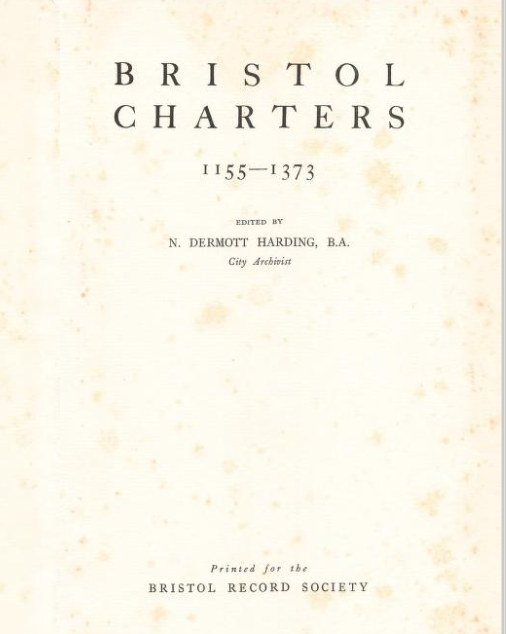
Flipping Norah …
Confession …
For many years, I assumed that this was some bloke called Nigel or Norbert, who preferred his middle name. And only a man would be a city archivist in 1930, wouldn’t he?
Wrong! This was, in fact a woman, Norah Dermott Harding. And she seems worth a bit of investigation. I am intrigued about her appointment, and how it all went for her, and why she left after just a few years (marriage? And all that expertise lost?). No, don’t tell me there are many other things I am supposed to be doing …
GS
3/4/2023
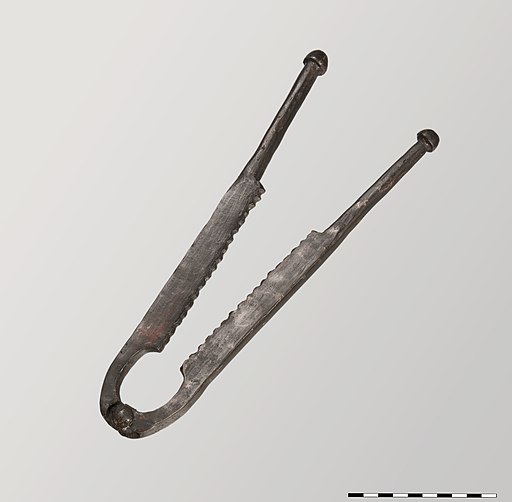
Thoroughly modern mayhem?
There is a story in the UK news[i] which is of potential interest to those of us who like a bit of mayhem. One Marius Gustavson appeared in Westminster magistrates court on Wednesday 22nd March, charged with offences including GBH for removing body parts from other men (those parts including penises, testicles,[ii] nipples, as well as damaging legs beyond healing, requiring amputation …). Other men, allegedly involved in the same activities, appeared in other courts. The chopping of bodies is portrayed in reports as perhaps being consensual, and part of a ‘nullo’ subculture (a new thing to me), and the whole process also involved filming, streaming and charging people to view the footage.
It is the suggestion of consent which caught my attention. It is unlikely that a defence based on consent could succeed in this situation, following, in particular, the decision with regard to less extreme injuries in R v Brown back in the 1990s (gay S & M-inflicted injuries, Lancs; consent defence to offences under ss. 47 and 20 of the Offences Against the Person Act 1861 – ABH and wounding – does not work)[iii]. However, I wonder whether it will reignite people’s interest in the law which lies behind Brown, and, in particular, its discussion of mayhem/maim. Whether or not there is a full, discursive, judgment to pore over, I think we can probably anticipate some commentary which takes a bit of a wander through the weird and wonderful world of mayhem.
It does strike me that the injuries in this new case are actually much more clearly within the traditional bounds of mayhem than were those in Brown (or indeed the tongue-splitting etc. in R v. BM).[iv] Statements on the law of mayhem, and its application, required permanent damage, loss of function or total loss of a ‘member’, which I am not sure was present in Brown, though it certainly is here.[v] They are also very much tied to the male body – so damage to testicles in particular is specifically mentioned in the masculine-focused medieval definitions of mayhem. Leg-removal would also be a clear mayhem. Nipples I am less sure about. And Bracton completely failed to anticipate live-streaming, though it did predict one other aspect of this case – keeping the removed bits
We await the next part of the legal process – apparently due for the 19th April – and further enlightenment.
Updates
19th April: further proceedings: two men plead guilty to removing the nipple and penis of the alleged ringleader (GBH); there is also information about the procedure, in that lidocaine seems to have been used for anaesthesia, and about other offences,
There are set to be further court dates in May and June, and a provisional trial date in March 2024.
GS
27/3/2023
[i] See, e.g. the Guardian report, though it is in many other places.
[ii] Apparently this is done with something called a ‘burdizzo’. I now know 100% more about how this all works than I did 15 minutes ago. I am not sure that that is a good thing. None of the reports make it clear whether anaesthesia was involved. For castration in Bracton, see this post.
[iii] [1994] AC 212.
[iv] [2018] EWCA Crim 560.
[v] Some of the journalism also draws us into a story from Japan of a man who had his genitalia removed, cooked and eaten … Definitely beyond my mayhem-centric remit. I don’t think this was what Bracton had in mind in its passages on castration and mayhem.
Image: Roman castration pliers, obviously. Courtesy of Wikimedia Commons.

Also ran, or a bit of a gallop off in the wrong direction
Some time ago, it became apparent to me that there was a fair chance that any research-related keyword trawl of old newspapers would bring up results relating to horse racing. I suppose it’s not particularly surprising – there are lots of horse races and racehorses, and the equines can’t all be called Dobbin or Silver, so owners use whatever daft word or couple of words that may pop into their heads.
Today, I did an idle search for ‘Petty Treason’ in a newspaper database, just to check there wasn’t anything more I should be adding to my current project, and was interested and surprised to see quite a few hits from the 1960s and 1970s. I had forgotten the whole horse thing, but, as it turned out, most of the hits were, in fact racing results or lists of runners. It would seem that there was a filly called Petty Treason, which ran in races all over the country for a period in the early 60s. I rather like the fact that she was a lady horse (yes, that is the technical term) certainly resonates with my project, and its subject matter of women killing their husbands as petty treason. I also like the fact that Petty Treason’s sire [horse daddy – see, I know some of the words] was called High Treason.[i]
Petty Treason does not seem to have been massively successful – I have only seen one victory so far – but at least she did not follow the path of her namesake-offence and end up being burnt at the stake. She seems to have become a brood-mare [yes, again, note horsey vocab – crushing this!] and produced some offspring, with different stallions [and I am remembering more horsey vocab – that’s called ‘covering’ the mare, isn’t it … resonances with ‘coverture’ …?] though sadly they did not get treasonous or criminal names. Poor show.
Now – how on earth am I going to get this into the paper I am writing, on petty treason, for a conference in a few weeks? Stakes, that’s the link, isn’t it? Needs some thought. Giddy up!
GS
18/3/2023
[i] See, e.g., Times 14th Sept 1960 p 14, and, for her win see Times 13th June 1961 p.4.
Image: Photo by Daniel Bonilla on Unsplash See if you can get it – yes that’s right, it’s a horse! See, this equestrian stuff is easy. Off for a bit of dressaging now. What, you don’t dressage? Oh, you must …
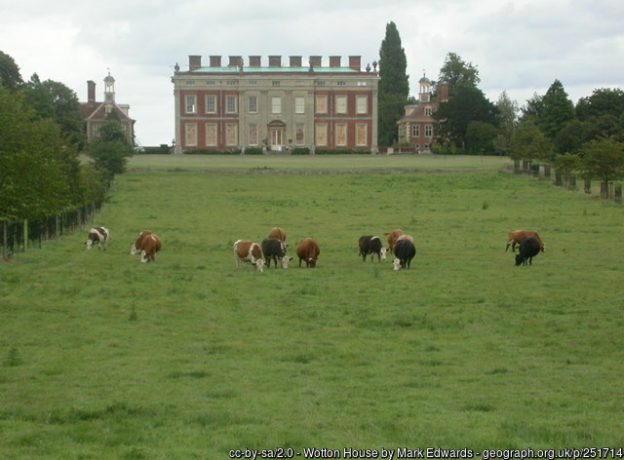
[E]stop in the name of love
Yes … wrenched pun heralds a note on the fact that yet another proprietary estoppel case has come out, Gladstone v White [2023] EWHC 329 Ch. Not a massively exciting one in terms of legal doctrine, but some things to notice about the judgment, and the ‘human interest’ reporting of the case in various parts of the press. And vaguely historical because it features an old stately home in Bucks …
Basic facts
The main contenders in the case were solicitor Leigh White and David Gladstone (a former diplomat, i.a. having been the High Commissioner to Sri Lanka). White claimed an interest in Gladstone’s land, (Wotton House, a Grade I listed ‘£15 million mansion’). White was, until recently, in the mansion and refusing to leave; she had been there since the pandemic, when Gladstone (a man in his late 80s) had moved out to self-isolate. He now wanted to come back and wanted her out.
There had been a close relationship between White and Gladstone, though there was disagreement as to whether this amounted to her being a ‘surrogate daughter’ (and thus just the person to be left the property) or her being rather more in the nature of a friendly and competent adviser (and thus not likely to expect to benefit in property terms).
So what happened? Read on …
The Legal Bit
Well … White’s claim was that she had an interest by virtue of proprietary estoppel. She said he had assured her that she would be left this interest, and she had acted to her detriment in reliance on it, so that it would be unconscionable for him not to give her the interest. He disagreed and wanted her out. On Gladstone’s side the argument was that there was no assurance which amounted to something White might reasonably have relied upon to her detriment, and not really any detriment, so no proprietary estoppel.[i] White lost on all fronts – and I don’t have anything very much to say about the law – it is applying the precedents in a fairly unsurprising way.
A long story
Several Land Law academics have commented on the length of this case – and, indeed, other proprietary estoppel cases. This one, from Trower J, weighs in at 123 pages. Many of us recently had to slog through 108 pages of Guest v. Guest. There is a genuine issue here, for teachers of Land Law – we all like the idea of students reading primary sources, of actually going to the case law, but it is becoming increasingly unrealistic to expect them to be on top of such long cases. (There are a few interesting points in another recent one, Mate v. Mate, a measly-by-comparison 92 pages, but that is not going on any of my reading lists). If it takes us a long time to get through one, we have to expect that it will take students, less (tragically) immersed in the background, and the other cases in the area, much, much longer. Obviously, judgments are not principally written for teaching purposes (unlike, we may think, the old Year Books) but I do wonder whether it is wholly necessary for them to be quite so discouragingly long.
As many of us work with assessment regimes with strict word limits for student answers, there does seem a particularly striking contrast between that insistence on efficiency of expression and the apparently complete lack of limits on the length of judgments. I wonder if the current generation of students, word-limited as they are, will produce shorter judgments when some of them rise to the heights of judgehood. Or will they take these cases as a challenge to produce ever longer judgments?
It certainly appears self-indulgent at times, to have 100 plus page judgments, and I do think that Guest could have benefited from some pruning. There is, perhaps, more reason to have longer judgments in lower courts, so as to set down all of the findings of fact, and the ‘workings out’, and to minimise the possibility of appeals and criticism on the basis that a first instance judge has not considered something or other, or not considered it properly. Still, it is a bit of a heart-sinker, seeing that you are on ‘p. 1 of 123’ in a judgment …
It could probably lose some of the narrative bits. Evidence of Gladstone’s ‘frail’ state of health was, of course, very relevant, as was White’s career as a solicitor, (first, because she was basing her case in having suffered detriment by giving it up to work at Wotton, and, secondly, because, given the knowledge of legal matters which it implied, it had implications for whether or not it was reasonable for her to rely on certain words as indicating that she would have a property interest). I am not sure that it was pertinent that Gladstone was ‘cultivated’ and ‘sensitive’ (34), or moved in ‘sophisticated circles’ (64), or the name of the architect who had done some revamping (even if that name is Ptolemy Dean. Ptolemy! Good Lord!). [And the suggestion that ‘David could be long-winded (128) may be thought to sit a little uninsightfully in a 123-page judgment….] So, we could do without some of the narrative elements, but nobody would want to redact the excellent passage in paragraph 421 in which we are treated to the exact wording of a quarrel in which somebody called White ‘a fucking nobody’ (though the judge does not use inverted commas, which does make it look rather as if the words are his.)
The coverage
Not that many Land Law cases find their way into the press. Not as exciting as big criminal cases, or Wagatha Christie style defamation cases, I suppose, but still, they do occasionally push the right journalistic buttons – different buttons for different papers. With this one, we have a mixture of:
- Wealth/prominence of the property owner (Millionaire ex-ambassador, or even ‘multimillionaire’)[ii] The Mail gives us the additional nugget that he was a descendant of William Ewart Gladstone (old families – marvellous …) and throws in the fact that Tony Blair and his wife Cherie Booth had bought ‘a former coach house’ on the estate (how very downmarket! And, at the same time, extravagant!)
- Value of the property (all accounts). Suspect it was this that drew in that well-known legal journal, the Tatler.
- The fact that the losing party was a lawyer (always a bit of schadenfreude when lawyers lose lawsuits, I think).[iii]
- The size of the legal bill faced by the losing lawyer (compounds, or adds an extra degree of piquancy to the schadenfreude felt by journalists, so it seems to me, anyway). £1 million is mentioned …[iv]
Only the Times, as far as I can see, went with a designation of ‘squatter’ for White. And, for a couple of points about Gladstone in his ambassadoring days, you’ll need to look at the Sri Lankan Times.
Anyway – law students, I am not sure I would bother plodding through this one: you have enough on with Guest v. Guest. It would be a rather good plot for a drama, though, should any TV or radio dramatists stumble upon this: class elements, stately home, tension, got to be Winslet as the lawyer-claimant, Nighy as the landowner; and a chance for a bit of a cameo from Michael Sheen as Tony Blair … come on, you know it makes sense.
GS
2/3/2023.
[i] (There were other things going on, to do with trusts and undue influence, but let’s keep it simple, and think just about Wotton and about the proprietary estoppel case).
[iv] See, e.g., Metro and Sun. In fact, this looks like a conservative figure, if my sums are correct!

